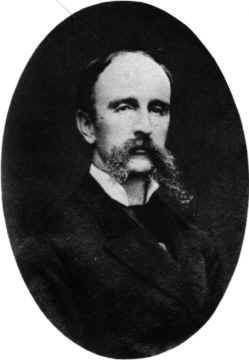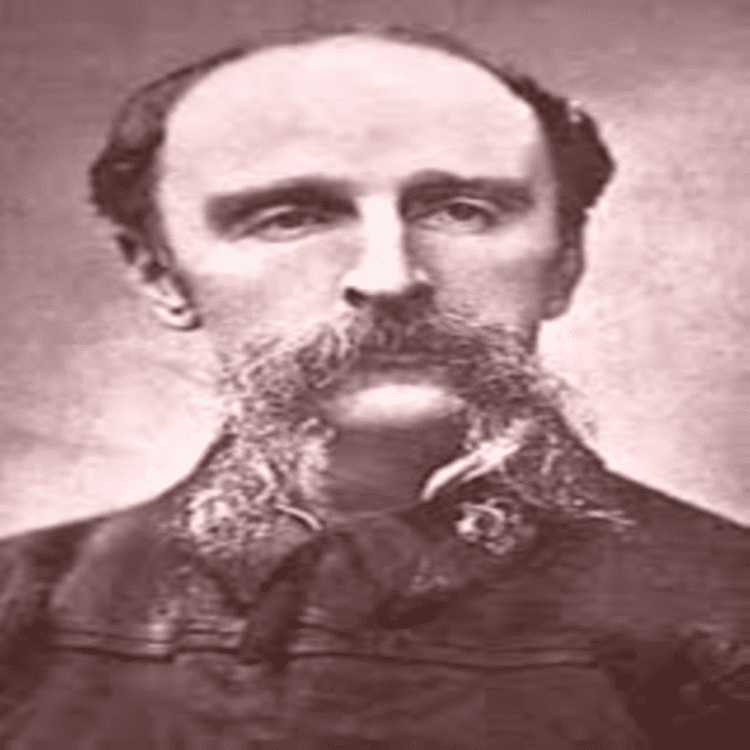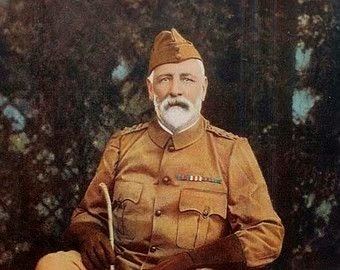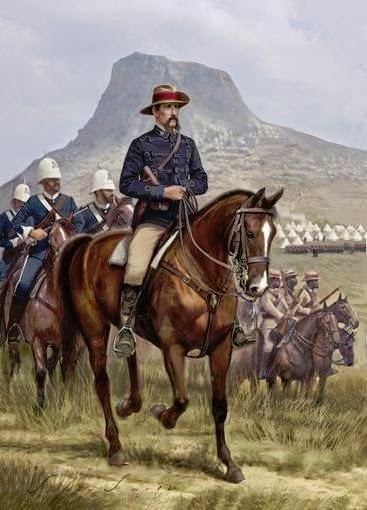Name Anthony Durnford Years of service 1848 – 1879 Role Engineer | Rank Lieutenant Colonel | |
 | ||
Commands held No.2 Column, Zululand Invasion Force People also search for Henry Pulleine, Frederic Thesiger, 2nd Baron Chelmsford, Ntshingwayo Khoza, Dabulamanzi kaMpande | ||
Lieutenant Colonel Anthony William Durnford (24 June 1830 – 22 January 1879) was an Irish career British Army officer of the Royal Engineers who served in the Anglo-Zulu War. Breveted colonel, Durnford is mainly known for his heroic presence at the defeat of the British Army by the Zulus at the Battle of Isandlwana.
Contents

Background

Durnford was born into a military family at Manor Hamilton, County Leitrim, Ireland, on 24 May 1830. His father was General Edward William Durnford, also of the Royal Engineers. His younger brother, Edward, also served in the British military, as a lieutenant-colonel in the Royal Marine Artillery. During his formative years he lived with his uncle in Düsseldorf, Germany.

In July 1846 Durnford returned to England to enter the Royal Military Academy at Woolwich and was commissioned a second lieutenant in the Royal Engineers in 1848 initially serving at Chatham and Scotland. Between 1851 and 1856 he served in Ceylon, stationed at Trincomalee, where he provided distinguished assistance in designing the harbour. In 1853 Durnford was instrumental in saving portions of the harbour defences from destruction by fire.

Durnford volunteered for service in the Crimean War but was not accepted. He was transferred in 1856 to Malta as an intermediate posting, but did not see active service either in the Crimea or in the Sepoy Mutiny of 1857. He served in Malta as an adjutant until February 1858, when he was promoted to Second Captain and posted back to Chatham and Aldershot in England. Between 1861 and 1864 Durnford commanded No. 27 Field Company, Royal Engineers, at Gibraltar.

In 1864, promoted to captain, he was transferred to China, but was invalided back to England while in transit due to heat apoplexy. After his recovery, Durnford spent the next six years at Devonport and Dublin on routine garrison duties. In 1871 he received a posting to South Africa.
South African duty
On 23 January 1872, he arrived in Cape Town, still never having seen active service. He was, however, promoted to major on 5 July 1872 and lieutenant colonel on 11 December 1873.
Of the 16 months following his arrival in the Cape, Durnford spent the greater portion at King William's Town. In a letter to his mother he wrote of the blacks: ″...they are at least honest, chivalrous and hospitable, true to their salt, although only barbarians. They are fine men, very naked and all that sort of thing, but thoroughly good fellows.″ He appears to have adhered to his idealistic picture throughout the remaining years of his life.
He was later stationed at Pietermaritzburg, where he was befriended by Bishop Colenso and he joined Theophilus Shepstone on an expedition to crown King Cetshwayo. Durnford had a close relationship with the bishop's daughter Frances Ellen Colenso. His marriage, though in a poor state, meant that they remained only close friends. However Ellen was to write a book later in support of his military reputation.
Durnford saw some action during the pursuit of Langalibalele at Bushman's River Pass, where he showed great courage but received two assegai stabs, one in his side, the other in his elbow; severing a nerve thus paralysing his left under-arm and hand for the rest of his life. Durnford managed to shoot two of his assailants with his revolver and to extricate himself. His Natal Carbineers had abandoned him, but his loyal Basuto troopers stood by him.
In 1878 Durnford, as the senior Royal Engineer officer in the colony, served on Sir Henry Bulwer's Boundary Commission to investigate the disputed border between the Transvaal and the Zulu Kingdom. Later that year he was tasked to plan the formation of an African auxiliary force which soon became the Natal Native Contingent (NNC).
Anglo-Zulu War
He was one of the most experienced officers of the Anglo-Zulu War --"commanding presence, untiring energy and undoubted powers of leadership", he was also apt to be headstrong, and was threatened with loss of command by Lord Chelmsford. Assigned to lead the No. 2 Column of Chelmsford's invasion army, Durnford commanded a mixed force of African troops including the Natal Native Horse and a detachment of the 1st Regiment Natal Native Contingent.
On 20 January, Durnford's force was ordered to Rorke's Drift to support Chelmsford's column. That evening, a portion of the No. 2 Column under Durnford arrived at Rorke's drift and camped on the Zulu bank where it remained through the next day.
Late on the evening of 21 January, Durnford was ordered to Isandlwana, as was a small detachment of No. 5 Field Company, Royal Engineers, commanded by Lieutenant John Chard, which had arrived on the 19th to repair the pontoons which bridged the Buffalo. Chard rode ahead of his detachment to Isandlwana on the morning of 22 January to clarify his orders, but was sent back to Rorke's Drift with only his wagon and its driver to construct defensive positions for the expected reinforcement company, passing Durnford's column en route in the opposite direction.
Around 10:30am on the morning of 22 January, Durnford arrived from Rorke's Drift with five troops of the Natal Native horse and a rocket battery. A Royal Engineer, Durnford was superior in rank to Brevet Lt-Col Henry Pulleine, who had been left in control of the camp. This put the issue of command to the fore because Durnford was senior and by tradition would have assumed command. Pulleine's rank was brevet lieutenant colonel, yet he was still being paid as a major. Durnford did not over-rule Pulleine's dispositions, however, and after lunch he quickly decided to take the initiative and move forward to engage a Zulu force which Pulleine and Durnford judged to be moving against Chelmsford's rear. Durnford asked for a company of the 24th, but Pulleine was reluctant to agree since his orders had been specifically to defend the camp.
Durnford was killed during the resulting battle, and was later criticised for taking men out of the camp thus weakening its defence. His policy though, was in effect to ride to the sound of the guns, "and attack the Zulu wherever they appeared", and was well respected by his native Basutos. It must be added, moreover, that the actions of Durnford and his command effectively halted the left horn of the Zulu army until their cartridge boxes began to run dry. This was no small accomplishment considering the Left Horn included the inGobamakhosi regiment, "The Benders of the Kings". Their ammunition supply expended, Durnford and his troopers fought their way back to the "saddle" that separated the wagon park from the rest of the camp. In one last valiant effort, Durnford, after ordering his native troopers to escape, perished with a mixed group of colonial volunteers and infantrymen of the 24th Foot after they had held apart the horns of the Zulu army long enough to enable many survivors to escape. Durnford's body was later found lying near a wagon, surrounded by the bodies of his men.
Among the causes of the disaster were the ill-defined relationship between Durnford and Pulleine, brought about by failures of Lord Chelmsford's command and control, a lack of good intelligence on the size and location of Zulu forces which resulted in Chelmsford splitting his force and, most decidedly, Chelmsford's decision not to fortify the camp (which was in direct violation of his own standing pre-campaign orders).
Popular culture
In the 1979 film Zulu Dawn, which depicted the battle of Isandlwana, Durnford was portrayed by Burt Lancaster.
